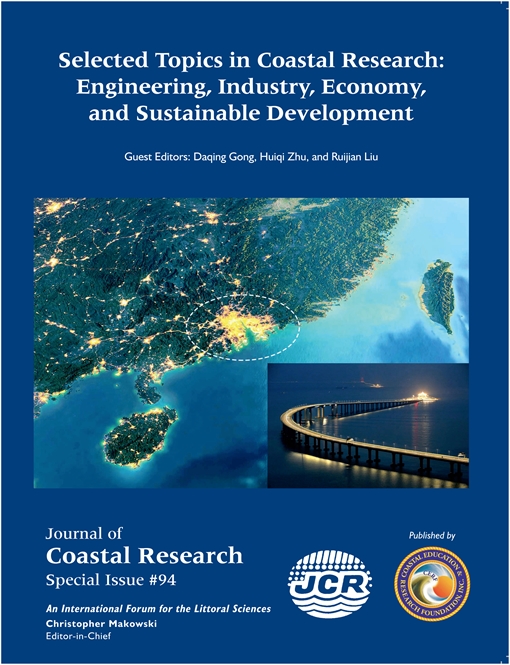Dong, B.; Zhu Y.-X.; Xu, Z.-Y.; Zhang, R., and Yi, G., 2019. Pollution characteristics and risk levels of the chemical toxin microcystin on coastal areas. In: Gong, D.; Zhu, H., and Liu, R. (eds.), Selected Topics in Coastal Research: Engineering, Industry, Economy, and Sustainable Development. Journal of Coastal Research, Special Issue No. 94, pp. 87–90. Coconut Creek (Florida), ISSN 0749-0208.
Microcystin (MC) is produced in large quantities during cyanobacteria blooms. This chemical toxin poses a major threat to irrigation water and the coastal environment at large. It is imperative to control the MC migration to coastal regions. In this paper, 10 MC samples were collected from coastal regions, including three typical types of the toxin, namely, MC-LR, MC-RR and MC-YR. The samples were subjected to analysis on their pollution features and health risks. The analysis shows that the MC in coastal regions mainly come from the irrigation water, in which the MC-LR and the MC-YR are respectively the maximum and minimum in content; in terms of ecological risks, the three types of MCs are ranked in descending order as MC-LR, MC-YR and MC-RR, but none of them surpasses the acceptable range of ecological risks. Meanwhile, the MCs may impair human body through oral ingestion, respiratory intake and skin contact; the MC-YR does the most harm to human health, followed by MC-LR and MC-RR; compared with adults, children are greatly affected by the MCs.





